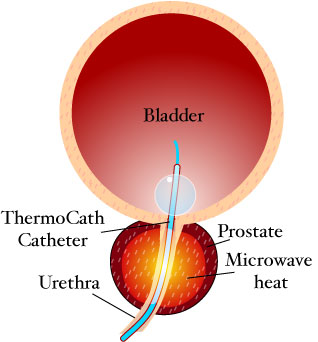Related Research Articles
This is a list of terms related to oncology. The original source for this list was the US National Cancer Institute's public domain Dictionary of Cancer Terms.
Palifermin is a truncated human recombinant keratinocyte growth factor (KGF) produced in Escherichia coli. KGF stimulates the growth of cells that line the surface of the mouth and intestinal tract.
Heat therapy, also called thermotherapy, is the use of heat in therapy, such as for pain relief and health. It can take the form of a hot cloth, hot water bottle, ultrasound, heating pad, hydrocollator packs, whirlpool baths, cordless FIR heat therapy wraps, and others. It can be beneficial to those with arthritis and stiff muscles and injuries to the deep tissue of the skin. Heat may be an effective self-care treatment for conditions like rheumatoid arthritis.

A therapy or medical treatment is the attempted remediation of a health problem, usually following a medical diagnosis. Both words, treatment and therapy, are often abbreviated tx, Tx, or Tx.

Adenosquamous carcinoma is a type of cancer that contains two types of cells: squamous cells and gland-like cells. It has been associated with more aggressive characteristics when compared to adenocarcinoma in certain cancers. It is responsible for 1% to 4% of exocrine forms of pancreas cancer.
Allovectin-7 is a substance that is being studied as a gene therapy agent in the treatment of cancer, such as malignant melanoma. It is a plasmid/lipid complex containing the DNA sequences encoding HLA-B7 and ß2 microglobulin - two components of major histocompatibility complex. It increases the ability of the immune system to recognize cancer cells and kill them.
Autologous stem-cell transplantation is the autologous transplantation of stem cells—that is, transplantation in which stem cells are removed from a person, stored, and later given back to that same person.
Stereotactic radiation therapy (SRT), also called stereotactic external-beam radiation therapy and stereotaxic radiation therapy, is a type of external radiation therapy that uses special equipment to position the patient and precisely deliver radiation to a tumor. The total dose of radiation is divided into several smaller doses given over several days. Stereotactic radiation therapy is used to treat brain tumors and other brain disorders. It is also being studied in the treatment of other types of cancer, such as lung cancer. What differentiates Stereotactic from conventional radiotherapy is the precision with which it is delivered. There are multiple systems available, some of which use specially designed frames which physically attach to the patient's skull while newer more advanced techniques use thermoplastic masks and highly accurate imaging systems to locate the patient. The result is the delivery of high doses of radiation with sub-millimetre accuracy.
Clear cell sarcoma of the kidney (CCSK) is an extremely rare type of kidney cancer comprising 3% of all pediatric renal tumours. Clear cell sarcoma of the kidney can spread from the kidney to other organs, most commonly the bone, but also including the lungs, brain, and soft tissues of the body.

Salivary gland tumours, also known as mucous gland adenomas or neoplasms, are tumours that form in the tissues of salivary glands. The salivary glands are classified as major or minor. The major salivary glands consist of the parotid, submandibular, and sublingual glands. The minor salivary glands consist of 800 to 1000 small mucus-secreting glands located throughout the lining of the oral cavity. Patients with these types of tumours may be asymptomatic.
Dose-dense chemotherapy is a chemotherapy treatment plan in which drugs are given with less time between treatments than in a standard chemotherapy treatment plan.

Hyperthermia therapy(or hyperthermia, or thermotherapy) is a type of medical treatment in which body tissue is exposed to temperatures above body temperature, in the region of 40–45 °C (104–113 °F). Hyperthermia is usually applied as an adjuvant to radiotherapy or chemotherapy, to which it works as a sensitizer, in an effort to treat cancer.
Spindle cell carcinoma is a type of cancer that begins in the skin or in tissues that line or cover internal organs and that contains long spindle-shaped cells. It is also called sarcomatoid carcinoma.

Oblimersen is an antisense oligodeoxyribonucleotide being studied as a possible treatment for several types of cancer, including chronic lymphocytic leukemia, B-cell lymphoma, and breast cancer. It may kill cancer cells by blocking the production of Bcl-2—a protein that makes cancer cells live longer—and by making them more sensitive to chemotherapy.

Transurethral microwave thermotherapy (TUMT) is one of a number of effective and safe procedures used in the treatment of lower urinary tract symptoms caused by benign prostatic hyperplasia. It is an alternative treatment to pharmacotherapy such as alpha blockers, transurethral resection of the prostate (TURP), transurethral needle ablation of the prostate, photoselective vaporization of the prostate and prostatic removal or prostatectomy.

A radiosensitizer is an agent that makes tumor cells more sensitive to radiation therapy. It is sometimes also known as a radiation sensitizer or radio-enhancer.
A fungating lesion is a skin lesion that fungates, that is, becomes like a fungus in its appearance or growth rate. It is marked by ulcerations and necrosis and usually presents a foul odor. This kind of lesion may occur in many types of cancer, including breast cancer, melanoma, and squamous cell carcinoma, and especially in advanced disease. The characteristic malodorous smell is caused by dimethyl trisulfide. It is usually not a fungal infection but rather a neoplastic growth with necrosing portions.
Stromagen is a product that is made of stem cells taken from a patient's bone marrow and grown in the laboratory. After a patient's bone marrow is destroyed by treatment with whole body irradiation or chemotherapy, these cells are injected back into the patient to help rebuild bone marrow. Stromagen has been studied in the prevention of graft-versus-host disease during stem cell transplant in patients receiving treatment for cancer. Stromagen is used in cellular therapy. Also called autologous expanded mesenchymal stem cells OTI-010. Peripheral stem cell transplantation may allow doctors to give higher doses of chemotherapy and kill more tumor cells. It is not yet known whether Stromagen improves the success of stem cell transplantation in women with breast cancer.
Lasers are used to treat cancer in several different ways. Their high-intensity light can be used to shrink or destroy tumors or precancerous growths. Lasers are most commonly used to treat superficial cancers such as basal-cell skin cancer and the very early stages of some cancers, such as cervical, penile, vaginal, vulvar, and non-small cell lung cancer.
References
- Microwave therapy entry in the public domain NCI Dictionary of Cancer Terms
![]() This article incorporates public domain material from Dictionary of Cancer Terms. U.S. National Cancer Institute.
This article incorporates public domain material from Dictionary of Cancer Terms. U.S. National Cancer Institute.